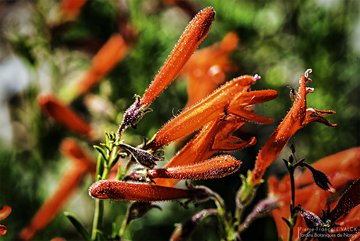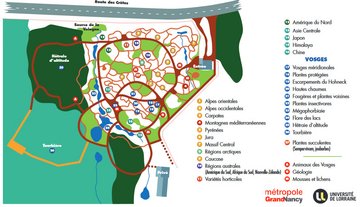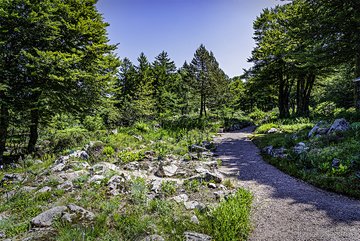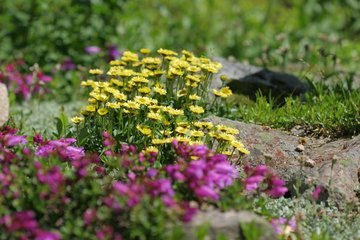Collections
Plants from the Vosges
The central part of the garden is wholly dedicated to the flora of the High Vosges, presented in small thematic collections.
The mountain range offers optimal growing conditions for ferns and rare lycopods. Further on, the main Vosges prostrate shrubs are presented: mountain ash trees, willows, rose bushes, red currant bushes, honeysuckles, etc.
Globeflowers, alpine clovers, arnica plants (the Arnica montana) or Leontodon pyrenaicus as well as fragrant meums give an insight of the botanical diversity of the Vosges altitude meadows, known as Hautes Chaumes.
The flora of the rocky crags is represented by various species of hawkweed (Hieracium) and several dwarf plants (thyme, veronica and potentilla).
Further on, some medicinal plants (arnica, great yellow gentian, yarrow, victory onion, etc.) are presented together alongside some toxic plant species, such as the white hellebore (not to be confused with the great yellow gentian) and the garden monkshood.
The area reserved for the forest flora presents the main companion species found in the beech-fir forest and the high-altitude beech forest: woodland geranium, purple foxglove, red campion, meadow bistort, Alpine lettuce etc., which can be found naturally alongside the roads leading to the garden.
Europe
The flora of the Alpine chain is widely represented among the other French mountains. Many cushion plant species (silene, saxifrage, thyme, minuartia, Saponaria etc.) are cultivated here. The flowering edelweiss near the reception chalet, as well as the rhododendrons, Alpine clematis, one-headed cat’s-ear (Hypochaeris uniflora), or the very rare Alpine sea holly (Eryngium alpinum) will charm the visitor.
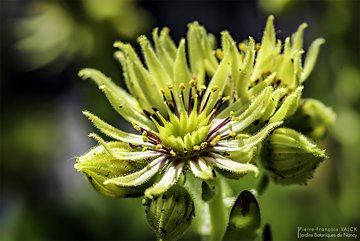
Southern Regions
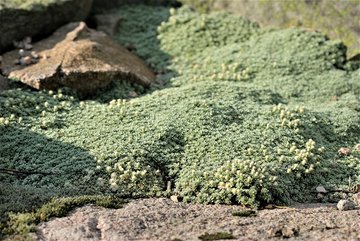
This rock garden is home to species from Patagonia, the mountains of South Africa, New Zealand and the Chilean Andes.
Carpeting plants (Raoulia hookeri), cushion plants (Myosotis pulvinaris), or slipper-shaped flowers (Calceolaria)... This area is home to many remarkable plants.
North America
North American mountain flora is located in the higher part of the garden. Phlox, Lewisia, Penstemon, Aquilegia, iris and scarlet beebalms all share the spotlight. Elsewhere, around the spring of the Vologne river, several species have grown around the spot (Lupinus, Dicentra, Mimulus, iris) and unite along other species, which thrive admirably as well, such as the Japanese Rodgersia, American skunk-cabbage and the Darmera from the saxifrages, with its large leaves that grow after its flowers...
